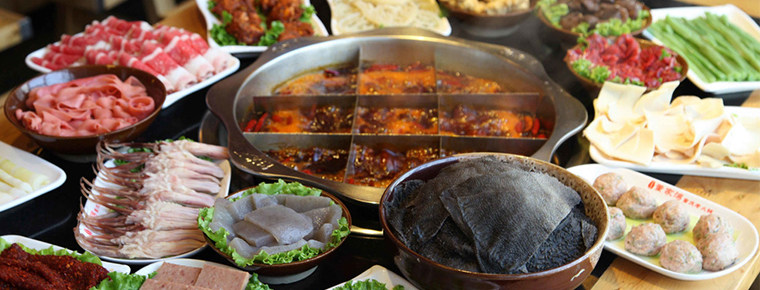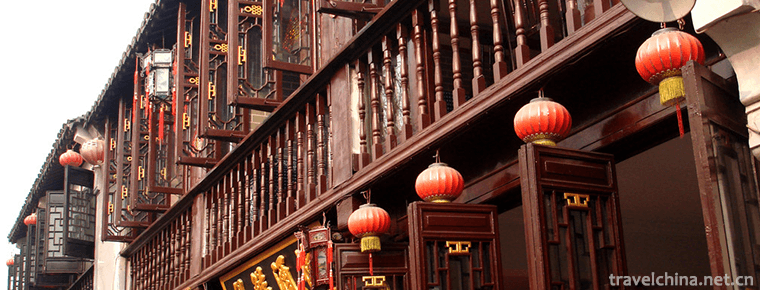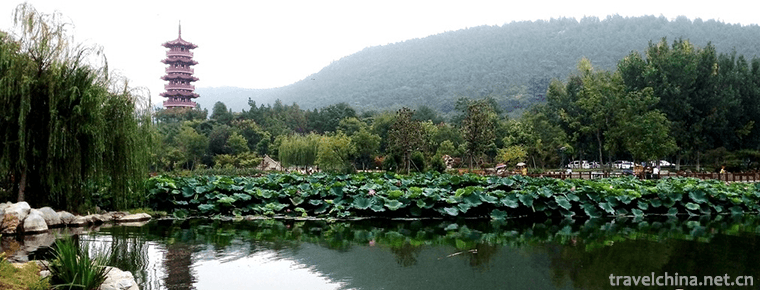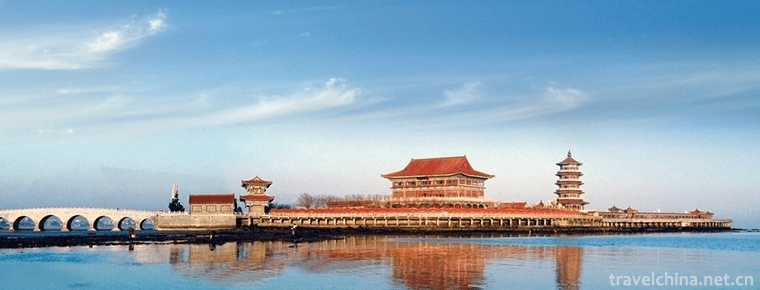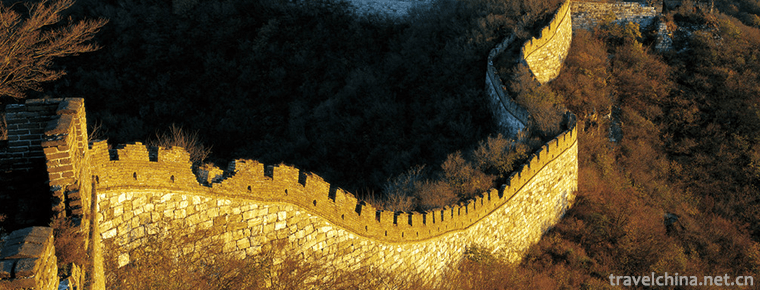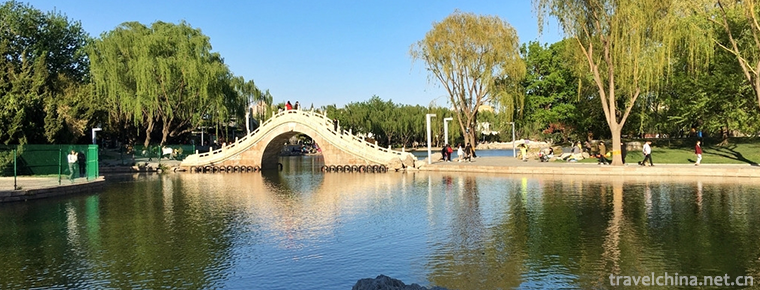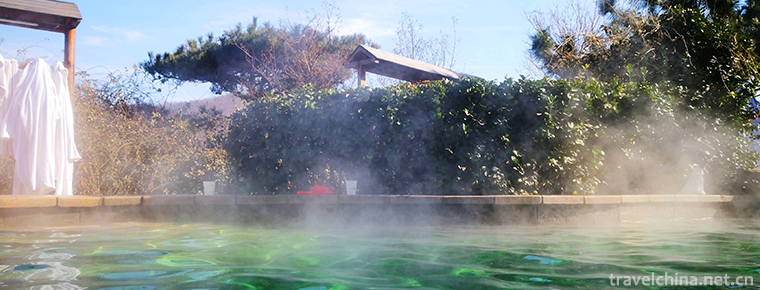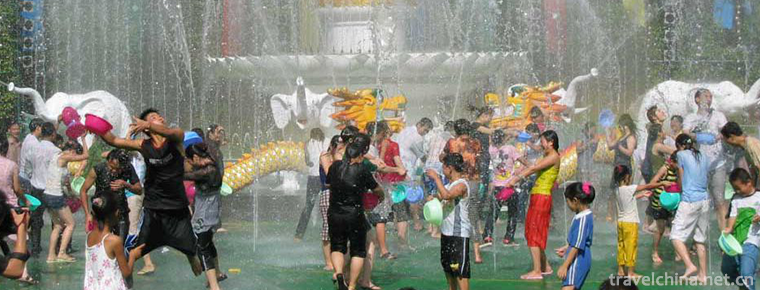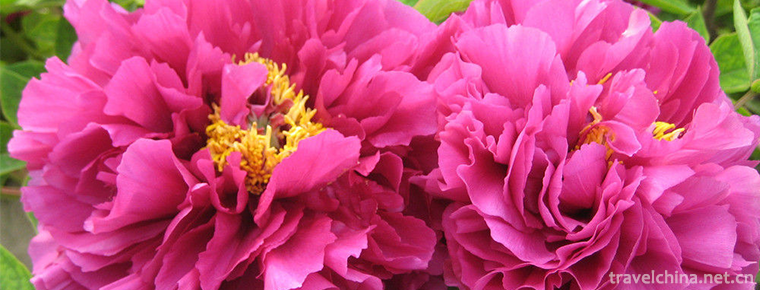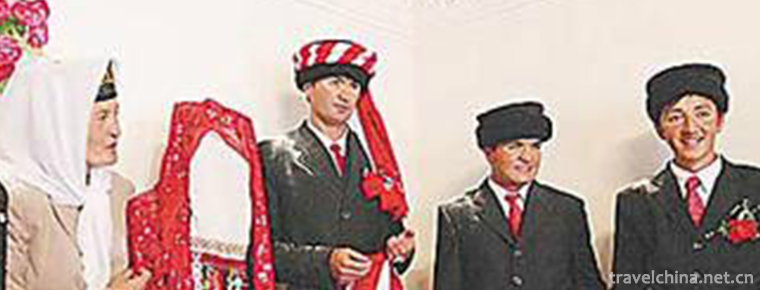Wooden drum dance
Wooden drum dance
Wood drum dance is one of the national intangible cultural heritage in Taijiang County of Guizhou Province and Cangyuan Wa Autonomous County of Yunnan Province.
Wood drum dance is a kind of folk dance that is spread among the Miao, Yi and Wa people in southwest China to dance and sacrifice by beating wood drum. Its drum shape is mostly to intercept the trunk of naturally growing trees and hollow out the internal shape. Generally, wood drum is a part of the large-scale sacrificial activities in which all ethnic groups participate. The wood drum is regarded as the symbol of the ethnic group. The sacrificial activities centered on beating and jumping wood drum are full of strong ancestor worship and natural worship, and have distinct characteristics of primitive culture.
On May 20, 2006, Wood Drum Encouragement was approved by the State Council to be included in the first batch of national intangible cultural heritage catalogues, numbered III-25.
historical origin
Wood drum inspiration originated from a pair of ancient brothers and sisters who learned to dance with birds and insects. Since ancient times, anti-row timber drum inspiration has been handed down from generation to generation in anti-row village.
At the beginning of the creation of heaven and earth, a huge flood devoured almost all lives on land. It was Muyiji who saved a wooden trough from the Wa people, and only then did the Wa people multiply and grow and survive to this day. From then on, the Awa people in ancient times regarded the wooden trough as the mother of the nation and gave it the highest worship. Awa people believe that the wooden drum is not only the trough that saved the ancestors of their own race, but also the incarnation of a strong mother, and the residence of Muyiji's soul. It has become a god-like instrument for the flourishing growth of all things. Therefore, it is an indispensable dance in sacrificial activities to express it in the form of dance, from the production of wooden drums to the communication of gods by beating wooden drums to achieve the purpose of God's blessing.
Since the beginning of the Tang Dynasty in 1954, Zhang Wenxian and others adapted the anti-row timber drum and performed in Beijing, there have been more than 100 anti-row timber drum performances.
On June 20, 1995, the State Council formulated and issued the Outline of the National Fitness Program in order to better carry out mass sports activities and enhance people's physical fitness. As a long-standing national mass activity in Anti-row Village, wooden drum encouragement requires less venues and props. It can promote the blood circulation, improve the flexibility and coordination of the body, and enhance the basic activity ability and physique of the human body.
In 2009, Taijiang County had a population of less than 150,000 people, of which more than 20,000 people would dance back-row timber drum.
In the 10s of the 21st century, the anti-platoon area of Taijiang County almost opened a new chapter for the people to dance wooden drum.
Inheritance and Protection
Inheritance value
Reverse row timber drum inspires unrestrained and vigorous, fierce and heroic, enthusiastic and unrestrained, showing the stubborn temperament and strong vitality of the Miao people in mountainous areas. She is the cream of Miao dance and a living fossil of Miao cultural activities. It is a wonderful flower of the world's national culture.
Anti-row village is rich in national cultural resources. In the 10s of the 21st century, the Miao cultural ecosphere with the main cultural characteristics of anti-row timber drum is still preserved. Reverse row timber drum dance is an important part of the Miao Drum Festival activities, or an important cultural link linking the Miao society.
Wooden drum is the God of heaven in the legend of the Wa people. It is regarded as the source of ethnic reproduction and the historical and cultural symbol of the Wa people. Wood drum dance embodies the achievements and characteristics of Wa folk songs and dances, literature, art and religious beliefs. It not only has high artistic value, but also has certain research value in art, ethnology, folklore and religion. Wood drum dancing is a master of Wa folk songs and dances, has become a pearl in the wooden drum culture that Wa people take pride in, is the most intuitive and vivid embodiment of Wa culture, has been loved by the majority of Wa people. Every festive day, people always dance wooden drum to express their joy. Wood drum has become a diligent, brave, united, enterprising and pioneering people of the Wa people. The symbol of national spirit plays an irreplaceable role in the cohesion of its national spirit.
Current situation of inheritance
Due to historical limitations, some villages have basically lost their heritage, and the existing prominent ones are anti-row timber inspiration, Shidong timber inspiration and Gedong timber inspiration. The two kinds of dances differ from the production of wooden drums to the beating of drums and dance movements, each having its own merits.
With the development of history, the consciousness and concept of Wa people have changed dramatically. The new scientific culture has replaced the feudal superstition in the old society. However, as a traditional sacrificial work, Wood Drum Encouragement has not disappeared. It has become a form of amusement dance recognized and loved by Awa people with a brand-new look that does not lose the traditional national style.
Heritage figures
Wan Zhengwen, male, Miao, born in Taijiang, Guizhou in 1951. The second batch of national intangible cultural heritage projects, Wood Drum Encouragement (anti-row Miao Wood Drum Encouragement), are representative successors.
Chen Jiebao, male, Wa nationality, born in May 1939, was named the representative successor of the fourth batch of national intangible cultural heritage Cangyuan Wa Mugu Encouragement List in December 2012.
protective measures
In order to build the Wa Mountain cultural characteristic county in Ximeng and promote the local wooden drum culture, the Wa Autonomous County of Ximeng holds the International Wa Drum Festival from April 13 to 15 every year under the name of "wooden drum", as an important measure to develop the Wa Mountain national culture in Ximeng.
In May 2006, Taijiang County Anti-row Wood Encouragement has declared as a national intangible cultural heritage. At the same time, Taijiang County Anti-row Village has declared as a national intangible cultural heritage protection unit. Some nearby villages have also successfully declared provincial or state-level non-heritage protection units.
social influence
Important Exhibitions
In 1990, the Anti-row Wood Drum Encouragement Team performed in Zhongnanhai, which was favored by Jiang Zemin, Yang Shangkun and other party and state leaders. Later, it performed in more than ten countries and regions, such as Britain, the United States, Canada and Italy. It was known as the Oriental Disco and was well-known overseas.
On April 30, 2015, the Cangyuan Wa Wood Drum Encouragement Competition, a series of activities of the "Black Carnival" in Sigangli, Wa Nationality of China, was held in the "Black Culture Plaza" in Cangyuan Wa Autonomous County, in which the "Wood Drum Encouragement" was displayed.
Honorary recognition
The collective dance "The Sound of Wooden Drums Towards Beijing", created and performed by the Wengong Team of Cangyuan Wa Autonomous County, won the third prize for excellent program creation in Yunnan Province from October 1976 to December 1978.
On May 29, 2018, the first Zhejiang Folk Art Exhibition and the seventh Zhejiang Folk Literature and Art Yingshan Red Award-Excellent Folk Art Performance Selection Activity were held in Fenghua Stadium. The She Wood Drum Encouragement of Anji County was awarded the seventh Zhejiang Folk Literature and Art Yingshan Red Gold Award.
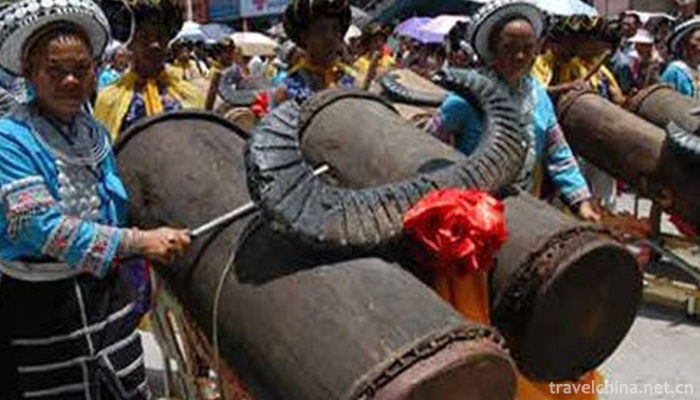
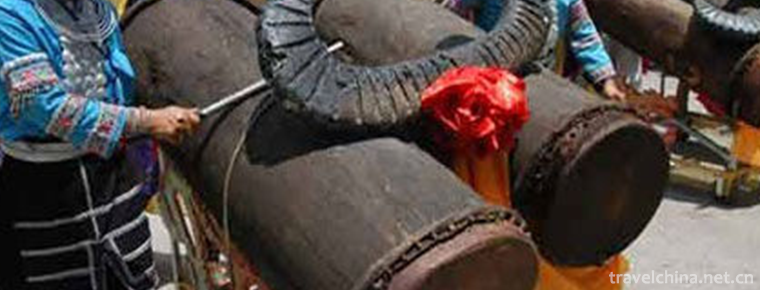
Wooden drum dance
-
Zhouzhuang Town
Zhouzhuang Ancient Town is a preferred site for world cultural heritage and the first batch of national 5A tourist attractions. It is located in the southeast of Suzhou City and at the junction of Kun
Views: 358 Time 2018-12-06 -
Yunlong Lake
Located in the southwest of Xuzhou City, Jiangsu Province, Yunlong Lake is the main scenic spot of Yunlong Lake Scenic Area in Xuzhou, formerly known as "Stone Dog Lake"
Views: 165 Time 2018-12-06 -
Eight Immortals Crossing the Sea Scenic Area
Eight Immortals Crossing the Sea Scenic Area, also known as Eight Immortals Crossing the Sea and Eight Immortals Crossing the Haikou, is situated on the shore of the North Yellow Sea in Penglai City
Views: 239 Time 2018-12-23 -
Jiankou Great Wall
The Great Wall is located in Badaohe Township, northwest of Huairou District, Beijing suburb. It is 1141 meters above sea level and about 30 kilometers away from Huairou County.
Views: 256 Time 2019-01-21 -
Longtan Park
Longtan Park is located opposite Longtan Beili District, Dongcheng District, Beijing (Chongwen District), and is currently a national 4A-level tourist park. Longtan Park
Views: 155 Time 2019-02-06 -
Taishan Hot Spring City
Taishan Hot Spring City Cultural Tourism Scenic Spot is invested and constructed by Shandong Taishan Hot Spring Tourism Development Co., Ltd. with a total investment of 2.6 billion yuan
Views: 154 Time 2019-02-13 -
Water splashing Festival
Dai Water-Splashing Festival is also called "Bath Buddha Festival". Dai language is called "Sangkangbimai" (meaning "New Year"). Dai people in Xishuangbanna Dai Autonomou
Views: 435 Time 2019-04-24 -
Circus
Circus is one of the acrobatics. Originally, it refers to the performance performed by people on horses. Now it is a general term for the performance of various wild animals and domesticated birds. It
Views: 145 Time 2019-05-16 -
Peony legend
Peony legend is one of the folk legends in Luoyang, Henan Province. Since Luoyang Peony became famous all over the country, myths, folklores and interesting stories have emerged one after another. The
Views: 265 Time 2019-06-05 -
Tajik Marriage Customs
On the Pamir Plateau, which is more than 4000 meters above sea level, there is a Tajik people living in China. This is a people who can sing, dance and hospitality. Their life is full of mystery, and
Views: 146 Time 2019-06-17 -
Cuiyun corridor
Cuiyun corridor is a section of the ancient Shu Road, and also a section of Jianmen Shu Road, which is famous for its danger. Cuiyunlang, also known as "Huangbai" and "zhangfeibai" in ancient times, is located in Jiange County, Guangyuan City, Sichuan Province, and Zitong County, Mianyang City. Cuiyunlang in Jiange county has been built into a national AAAA scenic spot.
Views: 132 Time 2020-11-08
